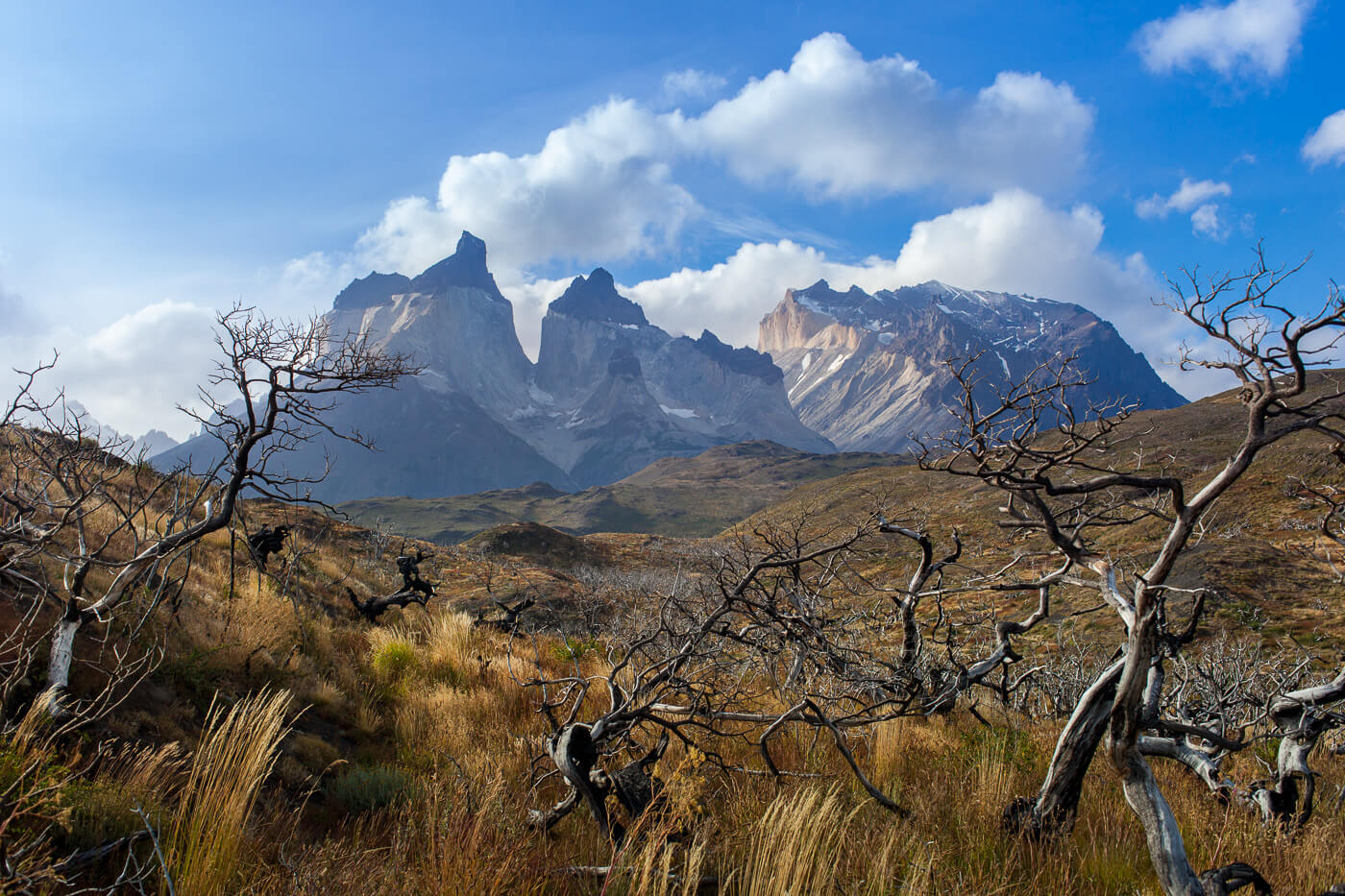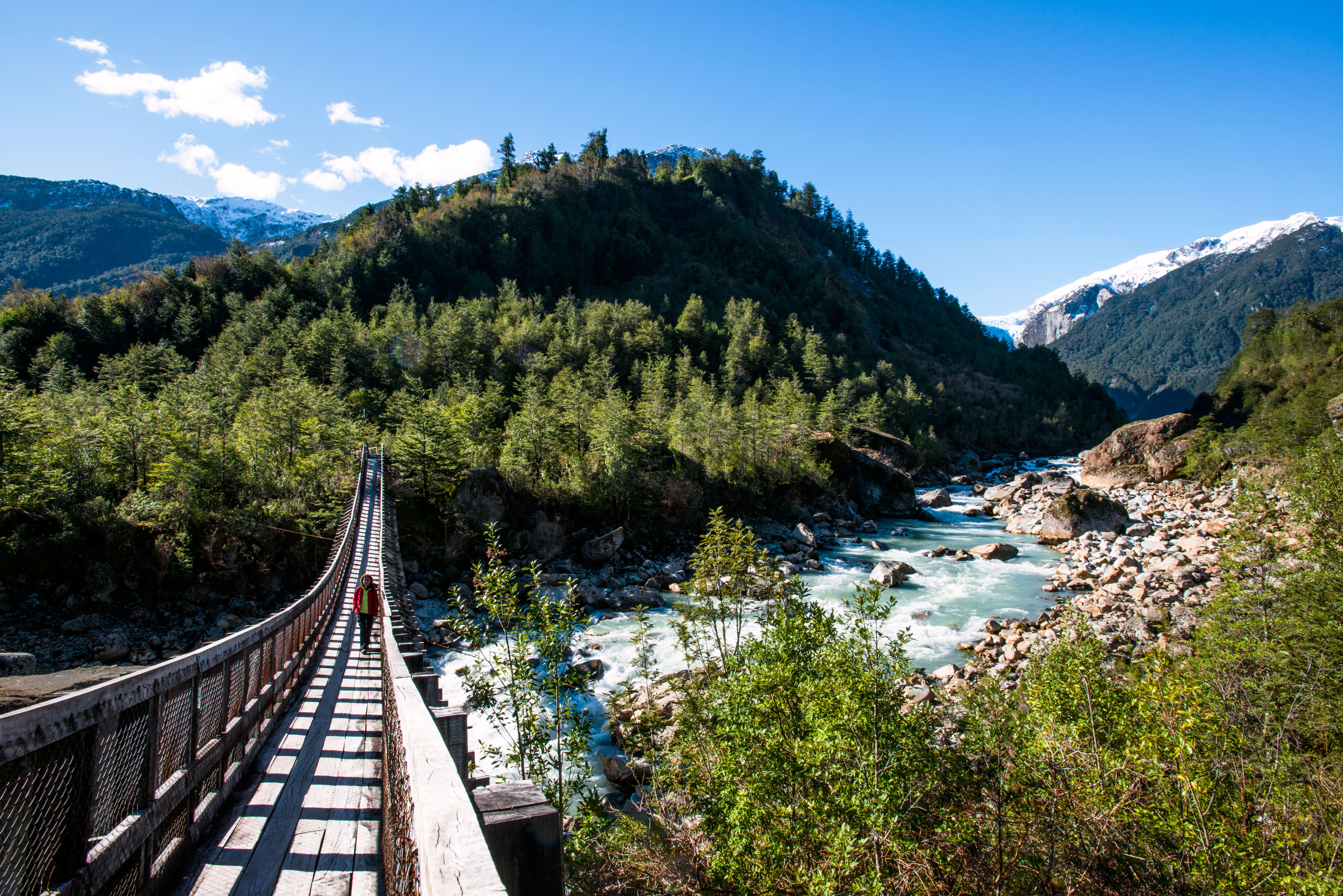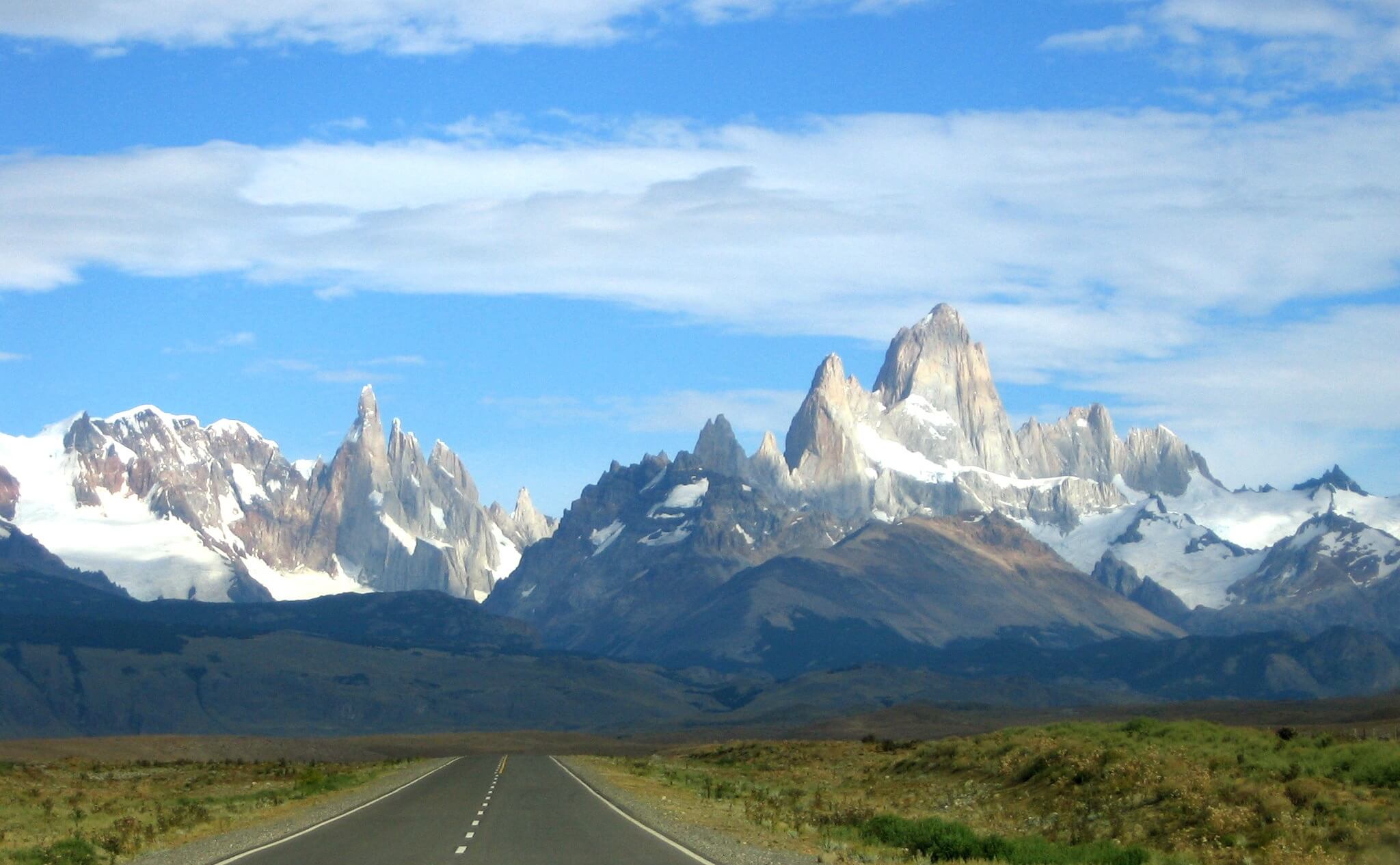Patagonia
Introduction to Patagonia
Patagonia is perhaps the most mythic of all South American destinations. It is dotted with lakes, carved by glaciers, populated by gnarled trees, fed by streams, at time blown by fierce winds, run through by guanacos, flown over by condors, and bathed in an almost translucent light much of the time. Chile and Argentina alone have access to this transformational land, which extends from the Lakes Region down to the very tip of South America, and beyond to the large island of Tierra del Fuego and Isla Navarino, Chile’s near-Antarctic island in the farthest reaches of the Americas. Visits here are deliberate, and require planning. Drives are punctuated with frequent stops to take in overlooks, feats of human engineering, old lava flows and in the springtime, miles and miles of blooming foxglove and lupins.
ROCKY TOPOGRAPHY
For those who hike, and even those who don’t, the sheer abruptness of the giant rocky outcroppings of Patagonia will astound. The castle-like spires of Cerro Castillo, offer a four-day hiking circuit, or simply a stunning view as clouds roll over and dissipate. Hikes in Torres del Paine pass the two-colored giant stone massif before hikers ascend to the base of the towers themselves. And down on the Carretera Austral, the Capillas de Marmol (marble caves) are limestone structures that have been worn by millennia of wind, rain, and the splashing turquoise waters of enormous Lago General Carrera, Chile’s largest lake.
VAST PARKS
Patagonia is sparsely-settled, and has many huge parks, both national and private, for both tourism and conservation purposes. Starting in the Lakes District, there is El Parque Nacional Vicente Pérez Rosales, with frothy Petrohué falls, and further south is Parque Pumalín, a native temperate rainforest where mist rises from the giant-palmed nalca leaves every morning. Further on is Parque Patagonia, like Pumalín, another Tompkins’ conservation project, deep in Aysén, where lucky visitors will spy the shy huemúl, a small deer endemic to Chile. In between there are many other reserves and parks, such as Queulát, with its hanging glacier and Hornopirén, known for its Valdivian temperate rain forests.
THE CARRETERA AUSTRAL
Much of Chile’s territory, laid out in the area we call Aysén, would be inaccessible, if it were not for the winding, turning, hilly, mostly unpaved road of the Carretera Austral, (Southern Highway). This 1240 km-long road stretches from near Puerto Montt to the nearly outpost town of Villa O’Higgins, passing through some of the most pristine and isolated land in the world. It takes days to drive, and the road itself is one of Chile’s most impressive engineering feats. Along the drive, expect visits to sunken forests, hanging glaciers, marble caves, untouched Valdivian rainforest, roiling river junctions, the occasional (or frequent) guanaco (relative to the llama) sightings and discover our remote Outpost adventure camps.
Can’t find what you’re looking for? Just because you don’t see it here doesn’t mean we can’t do it. Drop us a line and let us know what you’re searching for.
Traveler Reviews
We visited Chile to experience its wines and cuisine. We considered other tour operators but kept coming back to Upscape based on trip advisor’s reviews – and we are glad we did. We visited 9 wineries in all in the Colchagua, Casablanca, and San Antonio valleys. All our guides were proficient in English, very knowledgeable, and service oriented. We highly recommend Upscape for those visiting Santiago and surrounding wine country.
Bill and Ruth M. in Green Valley, AZ
“Please convey once again to all your colleagues our great pleasure in being so well taken care of. Our guides in Puerto Montt, Coyhaique and Santiago were excellent and accommodating, and our pilots were skilled and gracious”.
David rockefeller in New York City, NY
Trusted by







